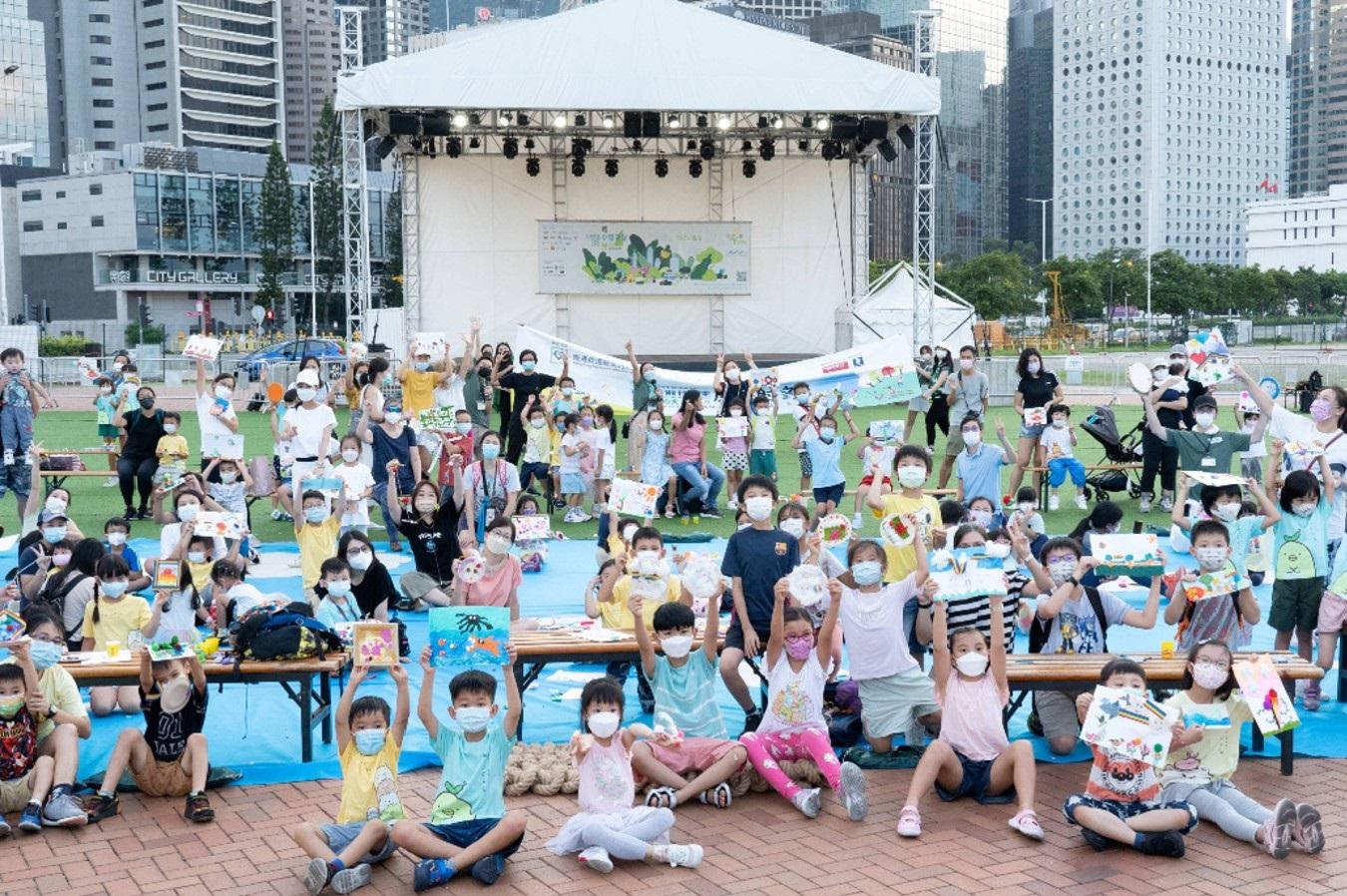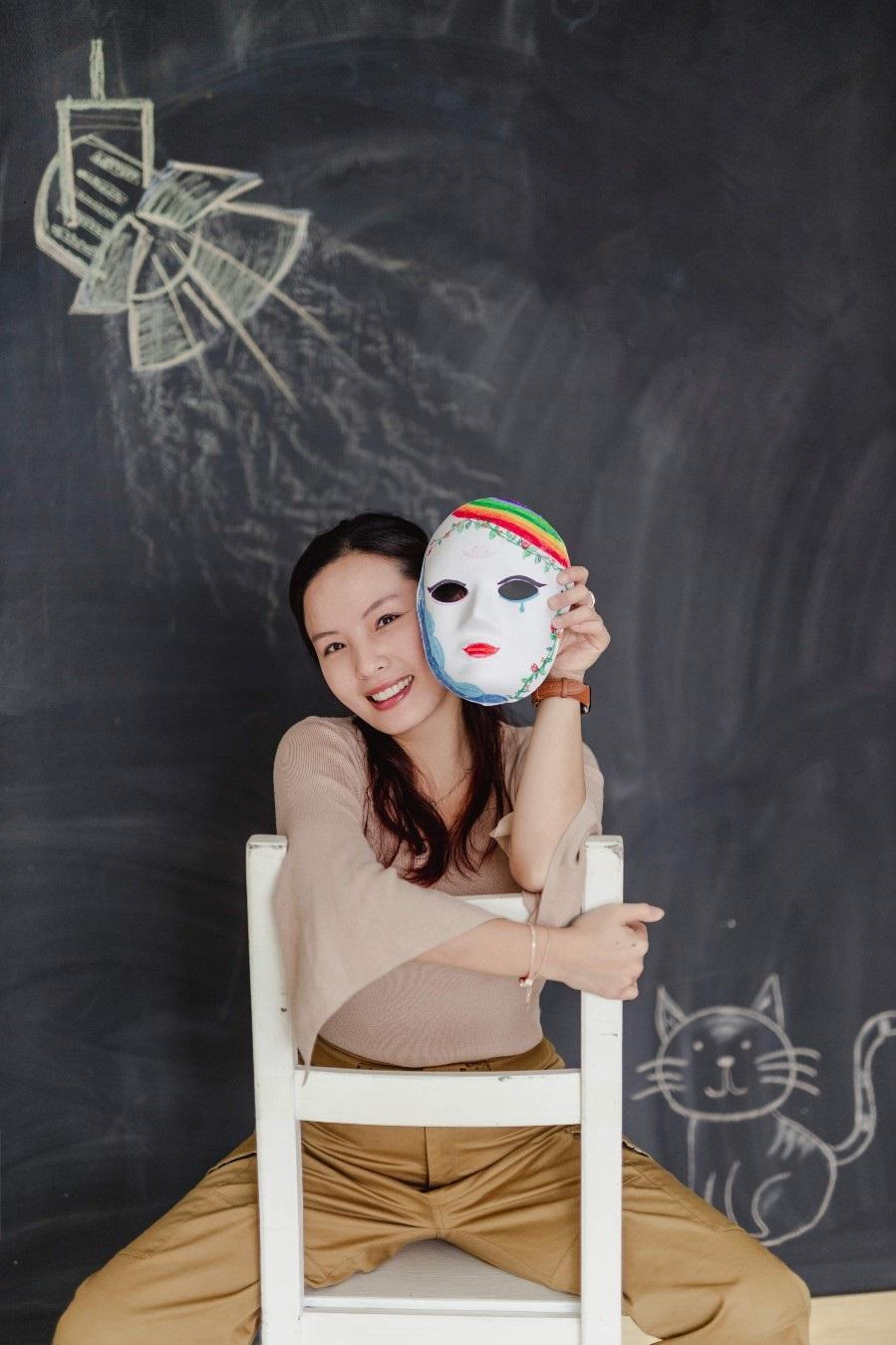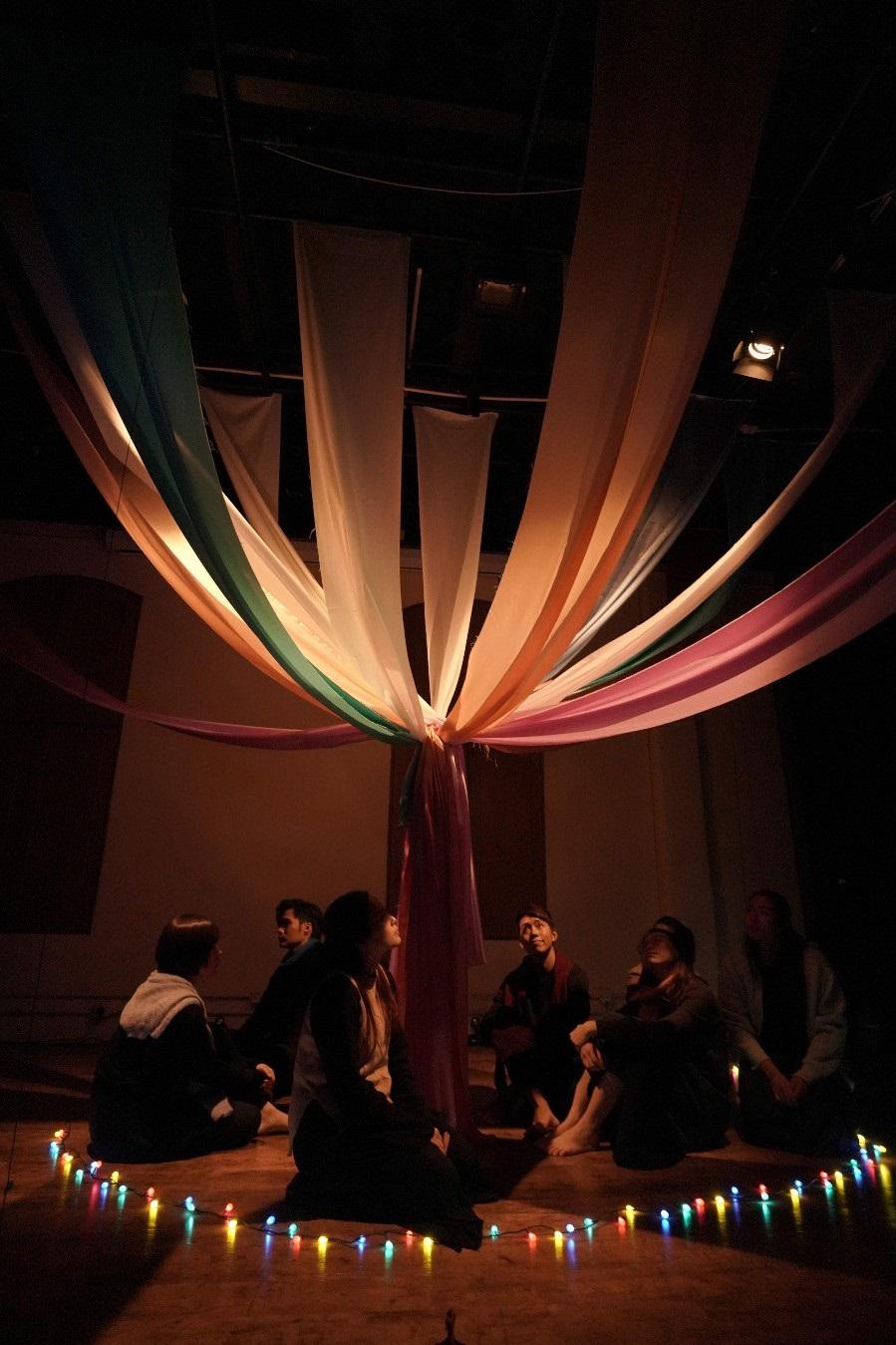share on
Seeing the surge of demand for creative arts therapy services and hence therapists, Canna Tang shares her life as an expressive arts therapist, what skills are required, and tips for improving mental wellness in the workplace.
Growing up in a family where some family members suffered from mental illnesses and emotional disorders, registered expressive arts therapist Canna Tang, Founder of Hong Kong Expressive Arts Therapy Service Center (HKEXAT), has had an early insight into the importance of mental wellbeing, and this brought her the determination of getting into the field of psychotherapy as a teenager.
"My upbringing gave me high emotional sensitivity as a present, and precious exposure to theatre arts as well, which helped me through ups and downs in my personal life," she elaborates. "I witnessed and experienced the healing power of various art modalities, and hence I recall being immediately drawn to the concept of arts as psychotherapy when I first heard of it."
Having started out pursuing a career in the industry after graduating with a bachelor's degree of psychology in 2011, and then obtaining the Master of Expressive Arts Therapy in 2016, Tang became an 'Expressive Arts Therapist' and cofounded HKEXAT in the same year.
HKEXAT aims to provide a wide range of expressive arts services for enhancing arts participation and mental wellbeing among the public, serving every individual regardless of their socioeconomic status, ethnicity or any form of disabilities, to promote equal opportunities for people with different needs to be benefited from expressive arts therapy.

HKEXAT is the first registered charitable organisation in Hong Kong that uses expressive arts therapy (EXAT) as a psychotherapeutic approach to improve mental wellbeing. EXAT is a multimodal intervention approach that integrates various arts, like visual art, music, drama, dance/movement, and creative writing, to foster therapeutic outcomes of body-mind-spirit in a supportive and non-judgmental environment, opening up non-verbal expression and communication opportunities, and providing a safe space and plentiful forms of media for the participant to express their thoughts and feelings.
"We believe that everyone has the capability of artmaking and self-healing potential," explains Tang. "Through introducing our users to the creative process, people can experience the healing power of arts, they can express and transform their emotions, discover the inner resources, and explore the potential creative ways for problem-solving to promote wellbeing among individuals."
In this edition of Inside Job with Tracy Chan, Tang shares her life as an expressive arts therapist, what skills are required to perform the job, and tips for improving mental wellness in the workplace.
Q: What does your everyday look like?
Clinical services and backend support are the two major areas constituting my everyday work. A part of the clinical services is to provide psychotherapy services, for instance, meeting service recipients for individual therapy sessions, delivering outreach group or individual therapy services to students at school or elderly people, people with mental illnesses or other chronic illnesses in different social service organisations. Besides therapy services, community education and promotion of mental health knowledge also take a big part of my daily work, I design and organise free community expressive arts programmes for underprivileged citizens to enjoy and learn how to adopt artmaking in their daily life to maintain mental wellbeing. In the long run, this part of work is to facilitate public health in body, mind, spirit via expressive arts therapy.
On the other hand, backend support works include providing clinical supervision to junior therapists of the center, conducting scientific research to study the effectiveness of Expressive Arts Therapy in promoting community mental health, and volunteer team training, etc.

Q: What's been your best or most memorable day at work?
It’s hard for me to name just one day as the best or most memorable day. When I start thinking about this question, many small pieces of memories and little moments appear in my mind.
I remember those moments when my cases came to the ending session and be ready to live their lives with a better self and shared with me a warm gratitude hug before saying goodbye; I remember those moments when people dance or draw with a satisfactory smile on their face in our community programme without knowing before that they could create by themselves; I recall those moments when a case started to appreciate themselves for their beauty and uniqueness; I recall those moments when a case found a way to express their long suppressed emotions; I recall those moments when my service recipients learnt to accept and live with their emotions. All the above constitute my best memories at work and have become the greatest motivation that keeps me going.
Q: What is the most rewarding part of your job?
The most rewarding part of being an expressive arts therapist is being able to witness the transformation of my service users. I always regard the opportunity to walk along with my cases to face their difficulties in life and to witness their growth and gains is the sign of precious trust that I received from them, to be able to see them move on to a next chapter of life with improved mental wellbeing is always the most fulfilling part of my job.
Q: Beyond artistic skills, what are some other important soft skills people might not realise are essential to being a good art therapist?
The first thing came to my mind is to be resilient.
As an expressive arts therapist, inevitably you will absorb loads of emotions from your service users, it is essential for a therapist to be able to unload themselves all the heavy emotions and keep a good boundary with your work life, so that you can be mentally well and grounded enough to continue containing the emotions of your service users with the present of arts.
Besides, many of our cases prefer nonverbal expression of emotions. It is essential for us to be sensitive to service users’ arts expression and their nonverbal cues during the art making process or throughout the whole session, so that we could gain better understanding about the mental status of our service users and to empathise with the emotions they are going through.
The last one I would like to share is more like a faith, yet for certain it affects whether you can truly empower your service users in the therapy. That is, to always stay trustful to your service users’ potential in arts as well as the healing power of arts.
Q: Technology has impacted a lot of industries. How has it impacted yours and what are some of the positives and negatives?
Under the pandemic, for the very first time, some of our services have been moved to online platforms. On its positive side, we found it has lowered the threshold and limitations for people to receive therapy; even being restricted by the quarantine order, people could still receive online therapy service and get emotional support during their difficult times. This also altered and widened the scope of service receivers, as well as increased the service accessibility for people with physical disability or limited mobility, e.g. elderly and hospitalised patients, who could attend therapy sessions through online platforms. It has also created new choices for artmaking, for instance, some of my teenage service users feel more comfortable using online artmaking apps or animation design programmes in expressing their thoughts and feelings.
Yet online therapy can never provide the same experience as the face-to-face therapy provides. It forfeits the use of sensory stimulation in the authentic in-person artmaking process which could largely contribute to the emergence of creativity and fresh insights.

Q: What does the future of work look like for art therapists? What upskilling needs to happen (to make you more agile if you wanted to change industry or career)?
Throughout the past few years operating a charitable organisation that provides expressive arts therapy services, we have observed a continued rising need of various creative arts therapy among the community of Hong Kong, especially in the post-pandemic era. The professionalism and benefits of expressive arts therapy in promoting mental wellbeing are nowadays more commonly accepted and recognised in the field of social services in Hong Kong. The rapid and positive change of the industry ecology has led to a reasonable forecast that more creative arts therapy services are needed, hence therapists will be in demand.
To maintain positive personal development in the industry, it is important to keep an open mind to emerging knowledge and concepts, and be innovative in exploring new intervention approaches to psychotherapy.
Q: What advice do you have for people aspiring to be an art therapist / work in the art therapy industry?
Let yourself be immersed in arts occasionally and start building an intimate relationship with arts in your daily life as the very first step. Then try working or volunteering for some frontline social services to explore if you enjoy interpersonal interactions and serving people with different needs. At the same time, equip yourself with psychology or counseling knowledge, so that you have more solid concepts of what psychotherapy is about for deciding whether this is what you truly desire, for either personal growth or developing a life-long career path.
Q: Please share some tips on alleviating stress and improving mental wellness in the workplace?
Creating a mental health friendly workplace can be achieved with easy some moves.
Employers can consider setting up a relaxation zone or timeout zone in office with soft lightning with natural scents for staff to take a break from work. Art materials and basic musical instruments could be provided in the zone to encourage employees to make arts to express their emotions freely, and hence relieving stress. Having a short art break or building a daily ritual of simple art engagement before or after work helps people set mental boundaries between work and personal life, regain calmness and concentration, which is also beneficial to imagination and creativity.
On a personal level, I think everyone can start with exploring your own safe and stress-free way of expression in arts. It can be just as simple as creating and listening to a stress relieving music playlist, or drawing some simple symbols that remind you of the important faith of your own that has brought you through tough times, or try some simple comforting movements such as a gentle tap on your chest, or simply writing down your favorite poem on a piece of paper whenever you feel stressed and carry it around.
Just help yourself to identity some simple art creations or experiences that may bring you the sense of security, calmness, and/or sense of control of your own life, revisit that art or recreate that art whenever you feel like needing some comfort or help from alleviating stress. Always remember that you already possess the creativity needed for facing difficulties at work and in personal life; all you need is to simply let it out.

The fifth edition of the National Counselling & Psychotherapy Conference, a global counselling event is back in Hong Kong on 28 September 2023. Immerse yourself in 10 informative sessions, featuring 13+ expert speakers, and connect with 200+ attendees from the region. Book your tickets and register here today!
Thank you for reading our story! If you have any feedback, feel free to let us know — take our 2023 Readers' Survey here.
All photos / Provided
share on
Follow us on Telegram and on Instagram @humanresourcesonline for all the latest HR and manpower news from around the region!
Related topics


